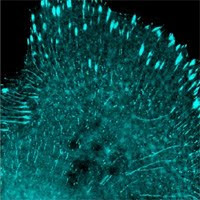http://www.allelebiotech.com/News//index.php?mod=article&cat=RNAi&article=774
By looking for miRNAs that are upregulated by VEGF or bFGF in umbilical vein endothelial cells (HUVECs) AND an ES neovascularization model, researchers in the Cheresh group at UCSD and Moores Cancer Center and the King lab at U Michigan identified miRNA-132 as a critical switch for activating endothelial cells during angiogenesis. The result, published in Aug 1st’s Nature Medicine, is most significant in that miRNA-132 could become a target for tumor prevention given the relevance of pathological blood vessel formation to tumors.
Profiling of miRNA during pathological development has been fruitful in many cases, including one conducted by Allele Biotech’s researchers and colleagues from Nanjing Medical University where a number of miRNAs were identified with dramatic changes that are specific to several stages of adipogenesis. It is somewhat surprising that miRNA profiling has not been done in more development models or in more systematic ways. In fact, other miRNAs have been identified as stimulators of angiogenesis previously, such as miR-296, which, different from miRNA-132, is “upregulated only in growth factor-treated endothelial cells but not in the developmental angiogenesis screen using human embryonic stem cells.”
The mechanism by which miRNA-132 enhances blood vessel formation has been pinpointed to a RAS regulator. The method used for predicting miRNA targets was by using 3 algorithms for finding multiple sites in the 3’-UTR. The technique for analyzing miRNA-12 effects was mostly based on using an anti-miRNA-132 oligo. Both cell and animal models were used in this study. A type of tumor-specific integrin-targeted nanoparticle was used to deliver anti-miRNA-132 to tumor sites in mice.
Anand et al. Nature Medicine, 08/01/2010
http://www.nature.com/nm/journal/vaop/ncurrent/full/nm.2186.html
Subscribe to:
Post Comments (Atom)




No comments:
Post a Comment